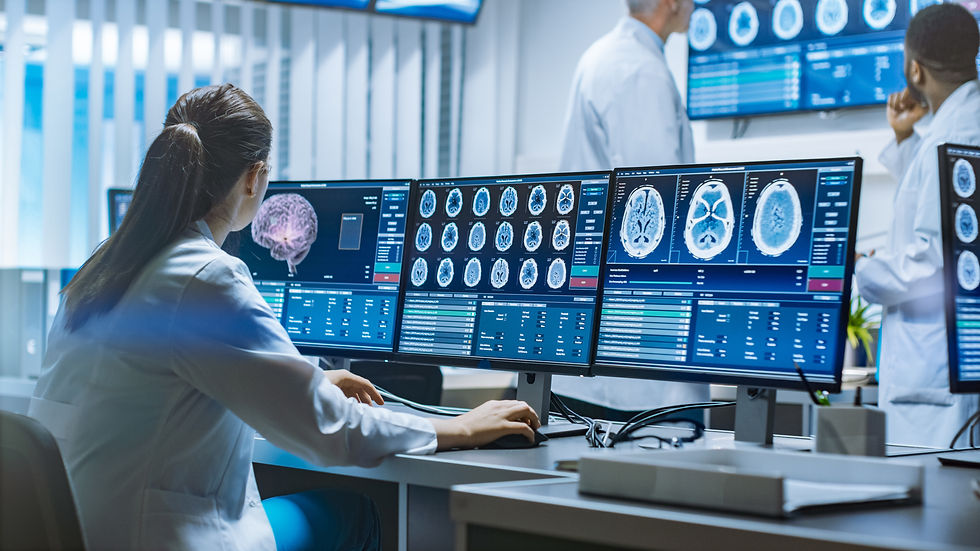Unpacking ADHD: Part 4 - Stimulants: Helping Brain Pathways Grow Stronger
- Hawley Campbell
- Jul 13
- 3 min read

Stimulants: More Than Just Symptom Relief in Children
For a long time, stimulant medications like methylphenidate (e.g., Ritalin, Concerta) and amphetamines (e.g., Adderall, Vyvanse) have been the go-to treatment for ADHD (Dutta et al., 2022; National Center for Biotechnology Information, 2020). They work by boosting the levels of important brain chemicals called neurotransmitters, like dopamine and norepinephrine (National Center for Biotechnology Information, 2020). These chemicals are like the brain's messengers, crucial for keeping our attention on track, staying motivated, and putting the brakes on impulsive actions—all things that are often out of sync in ADHD (National Center for Biotechnology Information, 2020).
But here's where the understanding of stimulants gets exciting: there's growing evidence that they don't just temporarily quiet symptoms; they might help the brain develop more typically, almost like "rewiring" neural pathways (Dutta et al., 2022). This suggests a much deeper role for these medications than we once thought. They seem to actively guide and support healthier brain development, especially in areas important for how we process rewards and notice what's important. This new perspective frames stimulant treatment as a way to positively influence brain structure during those crucial growing years, making a stronger case for why early and appropriate medication can be so beneficial.
A powerful piece of evidence for this "structural normalization" comes from a recent study by Wu and colleagues (2024). They looked at a large group of children aged 9-11. What they found was striking: children with significant ADHD symptoms who weren't on medication had thinner outer brain layers in the right insula and smaller volumes in the left nucleus accumbens compared to kids without ADHD (Wu et al., 2024). But here's the kicker: children with milder ADHD symptoms who were taking stimulant medication showed no significant differences in these specific brain structures compared to the typically developing kids (Wu et al., 2024)! This suggests that stimulant medications were linked to these brain areas developing more normally, especially those critical for attention, noticing important things, and processing rewards (Wu et al., 2024). This study is particularly impactful because it used a much larger sample size than previous research, giving us more solid proof of the structural benefits of stimulants (Wu et al., 2024).
In Part 5, we'll explore the intriguing long-term effects of ADHD and stimulant treatment on the brain as we age.

References
American Psychiatric Association. (2025, February 10). ADHD in adults: New research highlights trends and challenges. https://www.psychiatry.org/news-room/apa-blogs/adhd-in-adults-new-research-highlights
Cortese, S., & Castellanos, F. X. (2019). The neurobiology of ADHD: Still an enigma? Frontiers in Human Neuroscience, 13. https://doi.org/10.3389/fnhum.2019.00042
Cortese, S., Solmi, M., & Fusar-Poli, P. (2021). Neuroimaging of attention-deficit/hyperactivity disorder: A narrative review of recent findings. Current Opinion in Psychiatry, 34(2), 108–114. https://doi.org/10.1097/YCO.0000000000000674
Dutta, C. N., Christov-Moore, L., Ombao, H., & Douglas, P. K. (2022). Neuroprotection in late life attention-deficit/hyperactivity disorder: A review of pharmacotherapy and phenotype across the lifespan. Frontiers in Human Neuroscience, 16. https://doi.org/10.3389/fnhum.2022.938501
Kolar, A., & Cortese, S. (2019). The neurobiology and genetics of Attention-Deficit/Hyperactivity Disorder (ADHD): What every clinician should know. Current Psychiatry Reports, 21(10), 96. https://doi.org/10.1007/s11920-019-1088-7
National Center for Biotechnology Information. (2020). Attention-Deficit Hyperactivity Disorder. In StatPearls. StatPearls Publishing.
Neuroimaging and ADHD: fMRI, PET, DTI findings, and methodological limitations. (2013). Journal of Attention Disorders, 17(6), 455–469. https://pubmed.ncbi.nlm.nih.gov/23682662/
Visser, J., van der Meer, S., van der Heijden, P. T., & de Jong, J. T. (2024). Unmet needs and priorities for stigma reduction in ADHD: A qualitative study with young adults, parents, teachers, and mental health care professionals. BMC Psychiatry, 24(1), 847. https://doi.org/10.1186/s12888-024-05459-y
Wang, S. Y. A., Manza, P., Tomasi, D., Volkow, N. D., Wang, G. J., & Zhang, Y. (2023). Shared and distinct neurobehavioral phenotypes of child obesity and ADHD. Translational Psychiatry, 13(1), 74. https://doi.org/10.1038/s41398-023-02359-x
Wu, F., Zhang, W., Ji, W., Zhang, Y., Jiang, F., Li, G., Hu, Y., Wei, X., Wang, H., Wang, S. Y. A., Manza, P., Tomasi, D., Volkow, N. D., Gao, X., Wang, G. J., & Zhang, Y. (2024). Stimulant medications in children with ADHD normalize the structure of brain regions associated with attention and reward. Neuropsychopharmacology.
.jpg)



Comments